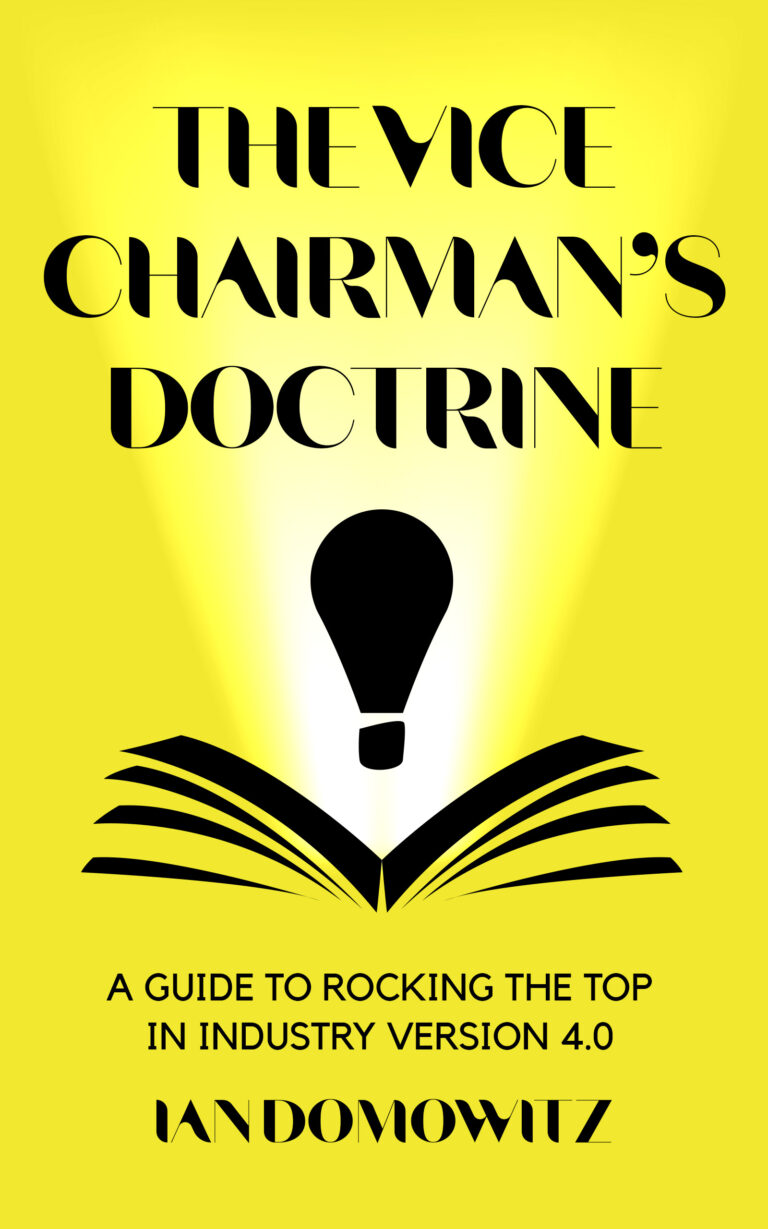The Vice Chairman, we’re told by author Ian Domowitz, is a sometimes difficult role to define, but one that’s primarily concerned with broadly redirecting a company to promote a more positive environment, and more effective outcomes. Domowitz’ life has been an almost equal mix of time in academia and Wall Street, and it shows. His book, THE VICE CHAIRMAN’S DOCTRINE, is a blend of the heady and weighty theoretical side of business – how things should move, according to the somewhat overly wordy concepts behind the key ideas – and practical experience that shows that these examples work in the right context. The book leans heavily on ideas like ‘soft power’: the idea that you can lead people primarily through influencing their behavior, adjusting the way they are rewarded, driving personal development, and pushing particular values forward. Many of Dorotwitz’s examples of soft power are pragmatic, with the idea of establishing connections, overcoming the ‘silos’ (essentially departmentalisation), interacting broadly across a company and trying to create sea change very much baked into the author’s concepts.
The text in THE VICE CHAIRMAN’S DOCTRINE can be quite high-brow and academic at times, which isn’t always the most accessible, but given due time, there’s also an underlying sense of fun to Dorowitz’ writing that jumps out in some of the examples in particular. There’s a feeling that while his messages probably aren’t quite as universal as his book seems to imply, they genuinely have been effective for him and his slightly laid back but empowering form of leadership. Aside from the leadership aspects, a central premise of the text is developing with what’s called ‘business 4.0’, essentially a foundation of change based on technology, one that feels inevitable for any top-level business. In this area, Dorowitz focuses mainly on how to get the technology to work for you: how can you adapt various areas, especially in terms of staff management, to ensure that they push a company in the right direction rather than clutter staff with unnecessary extras to process?
The key takeaways, ultimately, are that making the most of what’s available to you to drive forward a certain narrative in a company and the way it functions can be an extremely productive thing, especially for someone who’s able to see the broader picture of company interaction and politics, such as a Vice Chairman. The tools to do so are huge in scale, and while the text inevitably touches only on the most common, how they are utilized in areas like HR can be incredibly business critical. Dorowitz is heavily informed, and there’s an air about the text at times that you might need to be at somewhere near his level to fully grasp what he’s driving at. With its varied approaches through chapter topics, readers will learn about areas ranging from dealing with complexity to adjusting to a somewhat surreal role as the company ‘grey man’. The result is a good business book, but not one that would necessarily stand out of the crowd, especially for readers not dealing with the specific situation of the Vice Chairman and his challenges. Strong at times, then, but only in its specific targeted niche.
Self-deprecating and useful, Ian Domowitz’s THE VICE CHAIRMAN’S DOCTRINE is an executive-level business book full of weighty advice that sometimes feels muddled due to its often-changing tone and somewhat narrow contexts.
~James Hendicott for IndieReader


